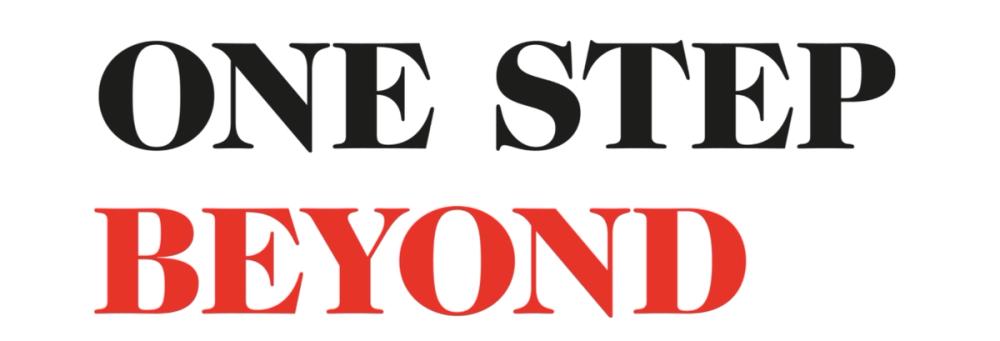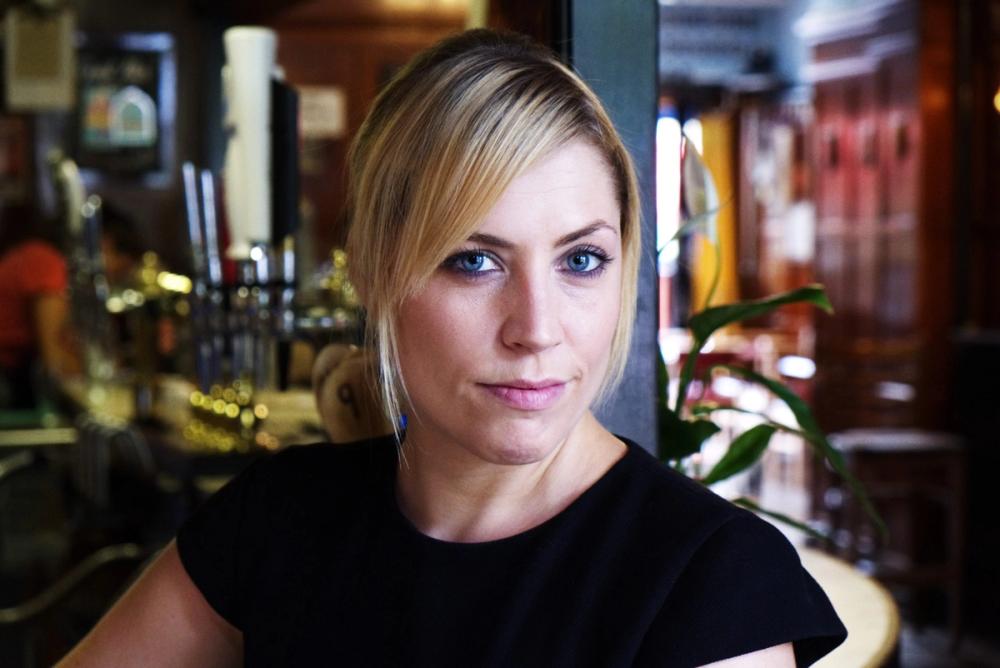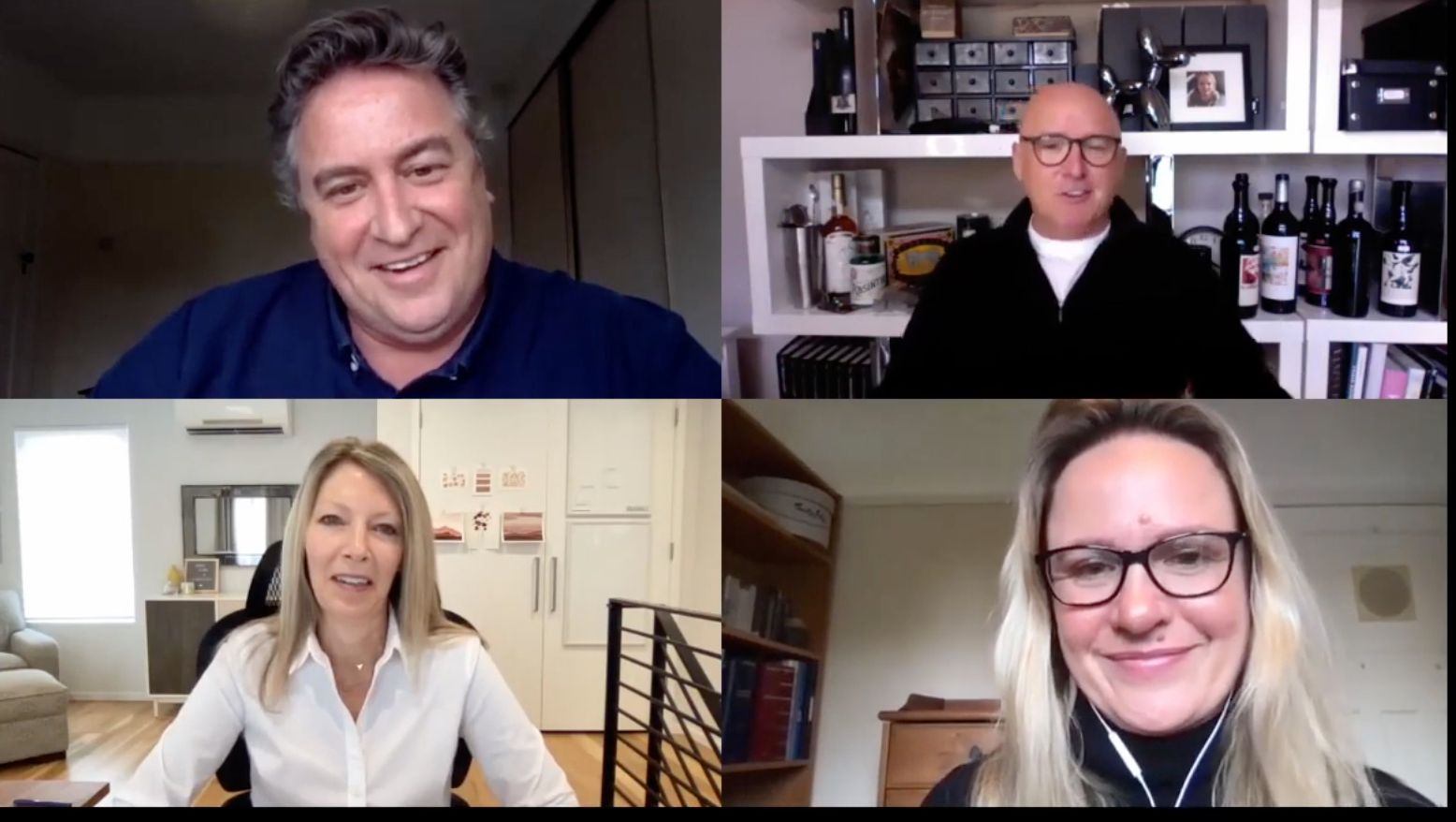Helping us truly understand what good “content” is when it comes to selling drinks online are our One Step Beyond panel including: Kevin Shaw, founder of specialist drinks agency, Stranger & Stranger; Erin Smith, marketing director of Slurp.co.uk, the online wine wine retailer that is part of Freixenet Copestick; and Leslie Yake, vice president for product at Pix.wine the new vertical search site for wine.

You can sign up to third free One Step Beyond webinar taking place on October 13 by registering here. It will include insights, analysis, interviews and debates with leading consumer and innovation experts including future trends from Tamar Kasriel, managing director Futureal; Robert Chin, chief executive, Aquilini Beverage Group (ABG) on ‘How to build your brand – Fast’; Paul Mabray, chief executive Pix: Thoughts from the frontline: ‘Be Real’; Richard Morley, founder of First Pour: ‘Making the most of influencer marketing’; panel debate on long term brand building with Robin Copestick, managing director, Freixenet Copestick, Kevin Shaw, chief executive Stranger and Stranger and Robert Chin of ABG. To register click here. Thanks to our One Step Beyond partners: WSTA, Pix.wine, Stranger & Stranger & Freixenet Copestick.
(Click here to watch the full recording of the second One Step Beyond Webinar here)
It might not appear as dramatic or as important as the invention of the internet, and all the digital innovations that have followed, but if you strip back the fundamental impact the digital age has had on all our lives is how it has given everyone, who is able to go online, the power to directly communicate with anyone in the world. Be it by text, email, a picture on Instagram, a full blown website, a direct to consumer sales platform, what you do with that power is down to you, the key is you have the capacity and capability to use it.
The shorthand term for all those texts, emails, What’s App messages, social media posts,through to online articles, product reviews, and direct mailers is “content”. It might not feel as though you are creating “content” when you do, but in the digital world, anything technically written, or posted can be classified as “content” ready for the internet’s powerful search algorithms to trawl through, dissect, analyse and make sense of. If you want to be at the cutting edge of digital retail then knowing what is the right content to be producing and how to create it has become arguably more important than the actual products sitting online waiting to be bought.
For without the right content to attract, engage and bring the right potential customers to your site, you are not going to be selling a lot of the wines, beers of spirits that might be listed on it.
Good content means good business
Creating the right content is fundamental to a business like Slurp, says Erin Smith, that relies on attracting existing and new customers to its site seven days a week. To do that well you have to be crystal clear about what your objectives are and defining what is the ultimate “goal” of your online business, she says.
(Click here for Slurp’s Erin Smith on why good content is essential in attracting & retaining customers & driving sales)
“How can content help you reach that goal,” she adds, which for Slurp as a DTC retailer is primarily around “growing my consumer base, retaining customers and driving transactions”. It also has a role, as part of the wider Freixenet Copestick group, to be helping to build its brands that sit on the site.
“What do you want to achieve and then how can content help me get there,” is Smith’s key message.
But how do you know if the content, the images, the reviews, the tasting notes etc are actually connecting with your target customer? The answer lies in the data, says Smith. Creating good, consistent, effective content goes hand-in-hand with excellent data analysis of how relevant that content is in driving bottom line sales.
Which for a smart website now means working on personalisation so that the right products are being shown to the right customer when they come to your site. There is now no such thing as one size fits all approach to digital retailing, she stresses. Instead you need to use data to segment your customers by the wines and drinks they by and only show them products they are most likely to buy based on their past shopping behaviour.
So if someone is regularly buying Sauvignon Blanc then make sure you show them alternative ‘fresh white wines’ on the home page.
Crucially, she says, be up front and tell your consumers that you are using their data to give them a better, more personal online service. “Tell them that we know you love this product,” she adds, which is why we are offering you these other wines. “You will build trust with that consumer and they will keep coming back to you.”
What’s more it also means you are not wasting everyone’s time by trying to sell them a product that you know they have no interest in buying. It’s just using the same sales techniques that a good local wine retailer would do in person with their customers, you are just doing it automatically online using the right data analysis, she says.
Do it right and you “you trade people, give them a reason to explore, spend a little more and treat themselves”. “Content helps you do that. It is everything from the imagery of the bottles you are using, so invest in photography, it well help premiumise what you are doing,” says Smith whilst at the same time giving your customers the reassurance to buy a product they do not know but are willing to spend more money on.
Used well good content, she says, can help customers “trust” the service and wines you are offering. “You have to give people lots of reasons to trust you and content can play a real key role in that. It’s visual and written content.”
(Click here for Slurp’s Erin Smith on why excellent data analysis is vital in creating good content online)
Telling stories
Kevin Shaw, at the world renown drinks design agency, Stranger & Stranger, says its job is actually pretty simple: “We’re all about telling stories.”
The challenge it has is really understanding the “brand vision” of the business that it hopes to do business with. To do that he asks them a basic question: “Why should anyone care about you?”
Which for some companies is harder to capture that it is for others, but it is vital that Stranger & Stranger get to that point in order for them to the go on and use that basic brand vision, or identity to start thinking of what designs might work for them. It is on that “vision”that everything else is built, be it an actual label design, or brand guidelines for a website and so on.
“It all comes back to the story,” he adds.
He tells the story of one California producer it had worked with last year that previously had a very similar label and brand image to countless other Napa producers. But the more the Stranger team dug into what it does, and its history it discovered a a truly unique and inspiring story around the efforts it is taking around sustainability that took your breath away in the level of detail it has gone into. A story it looked to capture in a “stunning design” that looked just as good on a T-shirt as it does a wine label. “When you got that sort of stuff it is gold,” he says.
Imagination his disappointment when he went on the winery’s website recently to find no sign of this carefully crafted design that encapsulates everything it stands for. Instead it had gone back to the same story of being a fourth generation family producer and its range of wines that so many other wineries rely on.
Yet tucked away in the small print at the bottom of the website under “Learn” and the “Environment” was suddenly this treasure trove of information about all the environmental steps it is taking that makes it one of the leaders in the field in the state. “This was a real killer message, yet it was buried. I was a bit upset I have to say.”
(Click here for Stranger & Stranger’s Kevin Shaw: we can only help companies that understand what they stand for)
Conversely he also talked about a brand that completely gets what good content and branding is all about – 19 Crimes from Treasury Wine Estates and its link up with with the rapper Snoop Dog, which has blown what is possible with wine branding out of the park. Here is a wine brand that does not talk about wine at all, says Shaw. “It talks about being infamous, and rebel against the label.”
It even includes an opportunity to go on to its website and through social media to “Ask the Dogfather” where “Snoop will give you advice in a very gangsta type of way,” adds Shaw. “The feed is amazing. It’s really feisty and in your face and doesn’t talk about wine at all.”
It’s clearly not an approach that is going to work for many other wine brands, but it makes Shaw’s point. Whether you like it or not 19 Crimes stands for something and its customers love it.
“It’s a question every wine producer should ask itself,” he says. “What do I stand for? I don’t care if you are the tallest dwarf. Just stand for something.
Contents needs to serve a purpose
Lesley Yake at Pix agreed with Smith and Shaw that ultimately any content you are producing on a business website has to be there “to serve a purpose” and essentially “help the consumer do what it wants to do”.
Her role is more around the platform itself and creating the foundation on which the content can sit, which means it is vital the development team is working completely in harmony with the content team and overall business to ensure the messaging and opportunity to create and share content is maximised.
“When you are woking with a desktop or phone app you have a limited amount of space to make a big impact, and help the consumer solve whatever it is we are looking to solve,” she said.
Click here for Pix’s Lesley Yake: digital content is like the furniture in a house. It’s there for a purpose)
Digital development teams are effectively “building homes” and putting in the “the foundations, the walls, the light switches and the plumbing” to make it habitable. “The content is the furniture and the art and all these different pieces” that are there waiting for the “home owner” to use whenever they “come home” or visit your website. If the content is not helping that “home owner” carry out any tasks it wants to do then “we don’t have any room for it”.
That’s particularly the challenge for the wine industry where there is so many products and producers all shouting for attention. It’s a problem, she said, Pix hopes to play its part with its vertical search platform that will hopefully serve up users wines and information most relevant to them and help them “make quick and easy decisions” about the wines they want to buy.
“We can’t do that without very effective content and placing it in exactly the right places at the exact right time,” she added.
Quality of data
Smith also stressed it comes down to the quality of the data you are capturing, storing and using and that you are “capturing it” in a way that the business can effectively use to target the right people.
It is also about taking the experience you have in a shop and moving it online, she added. Your site needs to be able to talk to customers in a similar way to how a wine merchant might do in their store. Suggest wines they want based on their needs and what occasions they will be using it for.Be it a dinner party with friends, meeting the in-laws, going out on business. Not just on the wine style, country or region.
Shaw urges wine producers to look at what spirits brands are doing. Pick out some different brands and look at the messaging, imagery and how they are telling different aspects of their story online.
Smith agreed. It’s finding the golden nuggets about a producer that can help “bring its brand to life”.
Scaling content
The beauty of digital content is that it has already been produced and is all around us. There is no need, for example, for you to write a new wine atlas or encyclopaedia when the are plenty of partners that you could potentially ask to link their content to your site for mutual gain.
The trick is knowing what content is available and how you go about – legally – using it. That’s the way you can scale and build your digital presence quite quickly, said Yake. The challenge is how you bring it together in a “meaningful way” that adds value to your customer’s experience on your site.
As a start up it is knowing how to take small steps quickly that give you the growth you need, but in a way you can manage.
“But even as we are building today we do have to think about those solutions and how we are going to get from A to B, B to C and so on. It’s a very hard problem in this industry to solve but then you would not start a start up to do something easy,” explained Yake.
And finally…
The final word goes to Kevin Shaw at Stranger & Stranger who said he has definitely seen a reaction in the design world to how fast we have all had to move online during lockdown. Labels are getting “punchier” and easier to understand in order to stand a fighting chance on an online phone app.
The best brands are also thinking completely differently. “19 Crimes is like an icon to me,” he said. “They’re launching seltzers. I have been doing this for 27 years and it is the first time I have seen a wine do something that isn’t wine and they’re going to kill it.”
He only hopes other brands will follow suit and park the need to talk about their “expert knowledge of the liquid”. “It’s about other stuff and I hope the wine industry starts to think that way,” he said.
One Step Beyond Free July Webinar
The other speakers and sessions included in the July One Step Beyond webinar included the below.

Katy Moses assessed what we need to know about the post pandemic consumer
- Katy Moses, managing director, KAM Media, the drinks and hospitality research consultancy: Understanding the post pandemic consumer and what that means for your business.
- Interview with Steve Ingham, chief executive of leading global recruitment consultancy, Michael Page, on how businesses can get the most out of their talent, remain resilient and connected to its people and customers.
- Dan Cullen-Shute, co-founder of Creature London, on why he thinks the wine industry’s. most powerful and profitable customers are the people who drink wine, but don’t think twice about it. Click here to read an analysis from his talk.
- Paul Mabray on how he has been able to recruit a new team from scratch in months for Pix the new vertical search wine discovery site. founder of Pix, on so that you keep in touch with your customers
- Panel debate on latest consumer and technology opportunities, with specific focus on the importance of creating quality, relevant content as part of any digital and e-commerce strategy. With Erin Smith, marketing director, Slurp Wine (part of Freixenet Copestick), Kevin Shaw, founder of Stranger & Stranger and Leslie Yake, vice president for product at Pix.
One Step Beyond October 13 Webinar
Registration for the third free One Step Beyond webinar is now open. Click here to do so. The agenda and panel for the session that runs from 4pm to 5.30pm on October 13 (GMT) is as follows:

Tamar Kasriel will be sharing her expertise as a professional futurist looking at key consumer trends
Tamar Kasriel, managing director Futureal: ‘Scenario planning for the future of retail and consumer behaviour’
The Interview: Robert Chin, chief executive, Aquilini Beverage Group (ABG) ‘How to build your brand – Fast’
Paul Mabray, chief executive Pix: Thoughts from the frontline: ‘Be Real’
Richard Morley, founder First Pour: ‘Making the most of influencer marketing’
The Conversation: Long term brand building with Robin Copestick, managing director, Freixenet Copestick, Kevin Shaw, chief executive Stranger and Stranger and Robert Chin, chief executive, ABG.
































